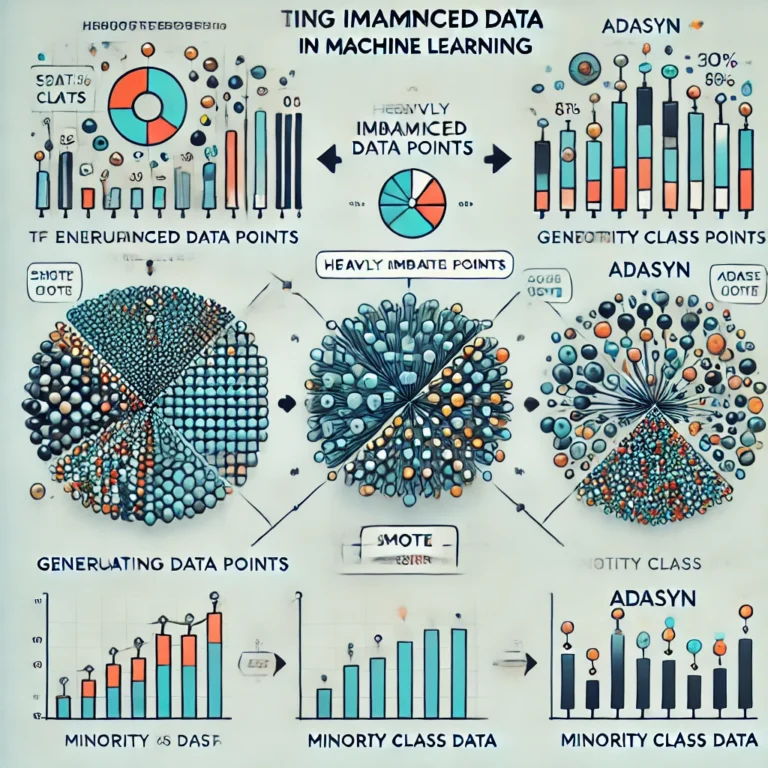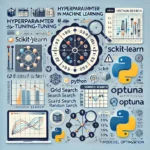In der traditionellen maschinellen Lernlandschaft gilt oft die Regel: Je mehr Trainingsdaten, desto besser. Doch was tun, wenn nur wenige Beispiele zur Verfügung stehen? Hier kommt Few-Shot Learning ins Spiel – eine innovative Herangehensweise, die es Modellen ermöglicht, auch mit minimal verfügbaren Daten effektiv zu lernen und zu generalisieren.
Was ist Few-Shot Learning?
Few-Shot Learning beschreibt die Fähigkeit eines Systems, neue Konzepte und Aufgaben mit nur wenigen Trainingsbeispielen zu erlernen. Im Gegensatz zum klassischen maschinellen Lernen, wo tausende oder millionen von Beispielen benötigt werden, zielt Few-Shot Learning darauf ab, mit einer Hand voll Beispielen (typischerweise 1-5 pro Klasse) erfolgreich zu sein.
Kernkonzepte und Methoden
Meta-Learning (Learning to Learn)
Meta-Learning ist eines der fundamentalen Konzepte hinter Few-Shot Learning. Dabei lernt das Modell nicht nur spezifische Aufgaben, sondern entwickelt ein grundlegendes Verständnis dafür, wie man lernt. Dies ermöglicht es dem Modell, sich schnell an neue Aufgaben anzupassen. Als Einspiegsbeispiel trainieren wir ein Modell an Sinuswellen-Daten mit einer zufälligen Amplitude und Phase.
import numpy as np
import tensorflow as tf
from tensorflow.keras import Model, layers
import matplotlib.pyplot as plt
# Generiere synthetische Daten für das Beispiel
def generate_sine_wave_data(samples_per_task=100):
amplitude = np.random.uniform(0.1, 5.0)
phase = np.random.uniform(0, np.pi)
x = np.linspace(-5, 5, samples_per_task)
y = amplitude * np.sin(x + phase)
return x, y
# Erstelle Trainings- und Testdaten
n_tasks = 1000
train_tasks = [generate_sine_wave_data() for _ in range(n_tasks)]
test_tasks = [generate_sine_wave_data() for _ in range(100)]
class MetaLearner(Model):
def __init__(self):
super(MetaLearner, self).__init__()
self.feature_extractor = tf.keras.Sequential([
layers.Dense(64, activation='relu'),
layers.Dense(64, activation='relu')
])
self.adaptation_network = layers.Dense(32, activation='relu')
self.predictor = layers.Dense(1)
def adapt(self, support_x, support_y):
"""Adaptiert das Modell an neue Aufgaben"""
with tf.GradientTape() as tape:
predictions = self(support_x)
loss = tf.reduce_mean(tf.square(predictions - support_y))
gradients = tape.gradient(loss, self.trainable_variables)
# Hier könnte man die Gradienten für die Adaptation nutzen
return loss
def call(self, x):
features = self.feature_extractor(x)
adapted_features = self.adaptation_network(features)
return self.predictor(adapted_features)
# Training
meta_learner = MetaLearner()
optimizer = tf.keras.optimizers.Adam(learning_rate=0.001)
@tf.function
def train_step(support_x, support_y, query_x, query_y):
with tf.GradientTape() as tape:
# Adaptation auf Support-Set
support_loss = meta_learner.adapt(support_x, support_y)
# Evaluation auf Query-Set
query_predictions = meta_learner(query_x)
query_loss = tf.reduce_mean(tf.square(query_predictions - query_y))
total_loss = support_loss + query_loss
gradients = tape.gradient(total_loss, meta_learner.trainable_variables)
optimizer.apply_gradients(zip(gradients, meta_learner.trainable_variables))
return total_loss
# Training Loop
epochs = 100
for epoch in range(epochs):
epoch_losses = []
for task_x, task_y in train_tasks:
# Teile Daten in Support und Query
split_idx = len(task_x) // 2
support_x = task_x[:split_idx]
support_y = task_y[:split_idx]
query_x = task_x[split_idx:]
query_y = task_y[split_idx:]
loss = train_step(support_x, support_y, query_x, query_y)
epoch_losses.append(loss)
if epoch % 10 == 0:
print(f"Epoch {epoch}, Loss: {np.mean(epoch_losses):.4f}")
# Evaluation und Visualisierung
def visualize_prediction(task_x, task_y, model):
plt.figure(figsize=(10, 5))
plt.scatter(task_x, task_y, label='Echte Daten')
# Modellvorhersagen
predictions = model.predict(task_x)
plt.plot(task_x, predictions, 'r-', label='Vorhersage')
plt.legend()
plt.show()
# Teste das Modell auf einer neuen Aufgabe
test_x, test_y = generate_sine_wave_data()
visualize_prediction(test_x, test_y, meta_learner)Siamese Networks
Siamese Networks sind eine populäre Architektur für Few-Shot Learning. Sie lernen Ähnlichkeiten zwischen Beispielen, anstatt direkte Klassifikationen vorzunehmen.
import tensorflow as tf
from tensorflow.keras import layers, Model
import numpy as np
from sklearn.model_selection import train_test_split
# Lade MNIST Daten
(x_train, y_train), (x_test, y_test) = tf.keras.datasets.mnist.load_data()
x_train = x_train.astype('float32') / 255.
x_test = x_test.astype('float32') / 255.
x_train = x_train.reshape(-1, 28, 28, 1)
x_test = x_test.reshape(-1, 28, 28, 1)
def create_pairs(x, y):
"""Erstellt positive und negative Paare für das Training"""
pairs = []
labels = []
# Dictionary für Indizes pro Klasse
digit_indices = [np.where(y == i)[0] for i in range(10)]
for idx1 in range(len(x)):
# Wähle das erste Bild
current_image = x[idx1]
digit = y[idx1]
# Erstelle ein positives Paar (gleiche Klasse)
idx2 = np.random.choice(digit_indices[digit])
pairs.append([current_image, x[idx2]])
labels.append(1)
# Erstelle ein negatives Paar (andere Klasse)
different_digit = np.random.choice(list(set(range(10)) - {digit}))
idx2 = np.random.choice(digit_indices[different_digit])
pairs.append([current_image, x[idx2]])
labels.append(0)
return np.array(pairs), np.array(labels)
# Erstelle Trainings- und Testpaare
train_pairs, train_labels = create_pairs(x_train, y_train)
test_pairs, test_labels = create_pairs(x_test, y_test)
def create_base_network(input_shape):
"""Basis CNN für das Siamese Network"""
inputs = layers.Input(shape=input_shape)
x = layers.Conv2D(32, (3, 3), activation='relu')(inputs)
x = layers.MaxPooling2D()(x)
x = layers.Conv2D(64, (3, 3), activation='relu')(x)
x = layers.MaxPooling2D()(x)
x = layers.Flatten()(x)
x = layers.Dense(128, activation='relu')(x)
return Model(inputs, x)
def euclidean_distance(vectors):
"""Berechnet die euklidische Distanz zwischen zwei Vektoren"""
x, y = vectors
return tf.sqrt(tf.reduce_sum(tf.square(x - y), axis=1, keepdims=True))
# Erstelle das Siamese Network
input_shape = (28, 28, 1)
base_network = create_base_network(input_shape)
input_a = layers.Input(shape=input_shape)
input_b = layers.Input(shape=input_shape)
processed_a = base_network(input_a)
processed_b = base_network(input_b)
distance = layers.Lambda(euclidean_distance)([processed_a, processed_b])
prediction = layers.Dense(1, activation='sigmoid')(distance)
siamese_model = Model(inputs=[input_a, input_b], outputs=prediction)
# Compile und Training
siamese_model.compile(
loss='binary_crossentropy',
optimizer='adam',
metrics=['accuracy']
)
# Training
history = siamese_model.fit(
[train_pairs[:, 0], train_pairs[:, 1]],
train_labels,
batch_size=128,
epochs=10,
validation_split=0.2
)
# Evaluierung
test_scores = siamese_model.evaluate(
[test_pairs[:, 0], test_pairs[:, 1]],
test_labels
)
print(f"Test Accuracy: {test_scores[1]:.4f}")
# Visualisierung der Ergebnisse
def visualize_pairs(pairs, labels, predictions=None):
"""Visualisiert Bildpaare und ihre Ähnlichkeit"""
n_pairs = 5
plt.figure(figsize=(15, 4))
for i in range(n_pairs):
# Erstes Bild
plt.subplot(2, n_pairs, i + 1)
plt.imshow(pairs[i, 0].reshape(28, 28), cmap='gray')
plt.axis('off')
# Zweites Bild
plt.subplot(2, n_pairs, n_pairs + i + 1)
plt.imshow(pairs[i, 1].reshape(28, 28), cmap='gray')
plt.axis('off')
if predictions is not None:
title = f"Similar: {predictions[i]:.2f}"
else:
title = f"Label: {labels[i]}"
plt.title(title)
plt.tight_layout()
plt.show()
# Teste das Modell mit einigen Beispielen
test_predictions = siamese_model.predict([test_pairs[:5, 0], test_pairs[:5, 1]])
visualize_pairs(test_pairs[:5], test_labels[:5], test_predictions)Prototypical Networks
Prototypical Networks berechnen einen Prototyp (durchschnittliche Einbettung) für jede Klasse und klassifizieren neue Beispiele basierend auf der Nähe zu diesen Prototypen. Der Kern dieser Methode besteht darin, Prototypen für jede Klasse zu berechnen, die als der Mittelwert der Merkmale aller Beispiele dieser Klasse dienen. Neue Datenpunkte werden dann klassifiziert, indem ihre Ähnlichkeit (z.B. euklidische Distanz) zu diesen Prototypen gemessen wird. Diese einfache, aber effektive Methode ermöglicht es Modellen, schnell auf neue Aufgaben zu lernen, ohne große Mengen an Daten zu benötigen.
def compute_prototypes(support_set, support_labels):
"""
Berechnet Prototypen für jede Klasse im Support-Set
"""
unique_classes = np.unique(support_labels)
prototypes = {}
for c in unique_classes:
class_examples = support_set[support_labels == c]
prototypes[c] = np.mean(class_examples, axis=0)
return prototypes
def prototype_classification(query, prototypes):
"""
Klassifiziert Query-Beispiele basierend auf der Nähe zu Prototypen
"""
distances = {}
for class_label, prototype in prototypes.items():
distances[class_label] = np.linalg.norm(query - prototype)
return min(distances, key=distances.get)Praktisches Beispiel
Ein klassisches Beispiel für Few-Shot Learning ist die Bildklassifikation mit limitierten Daten:
import tensorflow as tf
from tensorflow.keras import layers, Model
import numpy as np
from sklearn.model_selection import train_test_split
import matplotlib.pyplot as plt
from tensorflow.keras.preprocessing.image import ImageDataGenerator
class FewShotImageClassifier:
def __init__(self, input_shape, n_way=5, k_shot=1):
self.input_shape = input_shape
self.n_way = n_way # Anzahl der Klassen
self.k_shot = k_shot # Anzahl der Beispiele pro Klasse
self.encoder = self._build_encoder()
self.prototype_network = self._build_prototype_network()
self.train_datagen = ImageDataGenerator(
rotation_range=20,
width_shift_range=0.2,
height_shift_range=0.2,
horizontal_flip=True,
fill_mode='nearest'
)
def _build_encoder(self):
"""Erstellt das Encoder-Netzwerk für Feature-Extraktion"""
model = tf.keras.Sequential([
layers.Conv2D(64, (3, 3), activation='relu', input_shape=self.input_shape),
layers.BatchNormalization(),
layers.MaxPooling2D(),
layers.Conv2D(128, (3, 3), activation='relu'),
layers.BatchNormalization(),
layers.MaxPooling2D(),
layers.Conv2D(256, (3, 3), activation='relu'),
layers.BatchNormalization(),
layers.GlobalAveragePooling2D(),
layers.Dense(256, activation='relu')
])
return model
def _build_prototype_network(self):
"""Erstellt das Prototype Network"""
input_support = layers.Input(shape=self.input_shape)
input_query = layers.Input(shape=self.input_shape)
# Feature Extraction
support_features = self.encoder(input_support)
query_features = self.encoder(input_query)
# Prototype Layer
prototype_layer = layers.Lambda(
lambda x: tf.reduce_mean(
tf.reshape(x, (self.n_way, self.k_shot, -1)),
axis=1
)
)
prototypes = prototype_layer(support_features)
# Berechne Distanzen
distances = layers.Lambda(
lambda x: -tf.reduce_sum(
tf.square(x[0] - tf.expand_dims(x[1], axis=0)),
axis=-1
)
)([query_features, prototypes])
# Softmax über Distanzen
outputs = layers.Softmax()(distances)
return Model(inputs=[input_support, input_query], outputs=outputs)
def prepare_few_shot_batch(self, x, y, n_way=None, k_shot=None):
"""Bereitet einen Few-Shot Batch vor"""
n_way = n_way or self.n_way
k_shot = k_shot or self.k_shot
# Wähle zufällige Klassen
classes = np.random.choice(
np.unique(y),
size=n_way,
replace=False
)
support_images = []
query_images = []
query_labels = []
for i, c in enumerate(classes):
# Finde alle Bilder dieser Klasse
idx = np.where(y == c)[0]
# Wähle k_shot + 1 Bilder (k für Support, 1 für Query)
selected_idx = np.random.choice(
idx,
size=k_shot + 1,
replace=False
)
# Teile in Support und Query
support_images.extend(x[selected_idx[:k_shot]])
query_images.append(x[selected_idx[-1]])
query_labels.append(i)
return (np.array(support_images),
np.array(query_images),
np.array(query_labels))
def train(self, x_train, y_train, epochs=100, episodes_per_epoch=100):
"""Trainiert das Modell"""
optimizer = tf.keras.optimizers.Adam()
history = {
'loss': [],
'accuracy': []
}
for epoch in range(epochs):
epoch_loss = []
epoch_acc = []
for episode in range(episodes_per_epoch):
# Erstelle Episode
support_images, query_images, query_labels = \
self.prepare_few_shot_batch(x_train, y_train)
# Data Augmentation für Support-Set
augmented_support = np.zeros_like(support_images)
for i, img in enumerate(support_images):
augmented_support[i] = self.train_datagen.random_transform(img)
with tf.GradientTape() as tape:
# Forward pass
predictions = self.prototype_network(
[augmented_support, query_images]
)
# Berechne Verlust
loss = tf.reduce_mean(
tf.keras.losses.sparse_categorical_crossentropy(
query_labels,
predictions
)
)
# Gradient update
gradients = tape.gradient(
loss,
self.prototype_network.trainable_variables
)
optimizer.apply_gradients(
zip(gradients, self.prototype_network.trainable_variables)
)
# Berechne Accuracy
acc = tf.reduce_mean(
tf.cast(
tf.equal(
tf.argmax(predictions, axis=-1),
query_labels
),
tf.float32
)
)
epoch_loss.append(loss)
epoch_acc.append(acc)
# Speichere Metriken
avg_loss = np.mean(epoch_loss)
avg_acc = np.mean(epoch_acc)
history['loss'].append(avg_loss)
history['accuracy'].append(avg_acc)
if (epoch + 1) % 10 == 0:
print(f"Epoch {epoch + 1}/{epochs}")
print(f"Loss: {avg_loss:.4f}")
print(f"Accuracy: {avg_acc:.4f}")
return history
def evaluate(self, x_test, y_test, n_episodes=100):
"""Evaluiert das Modell"""
test_accuracies = []
for episode in range(n_episodes):
support_images, query_images, query_labels = \
self.prepare_few_shot_batch(x_test, y_test)
predictions = self.prototype_network.predict(
[support_images, query_images]
)
acc = np.mean(
np.argmax(predictions, axis=-1) == query_labels
)
test_accuracies.append(acc)
return np.mean(test_accuracies)
def visualize_episode(self, x, y):
"""Visualisiert eine Few-Shot Episode"""
support_images, query_images, query_labels = \
self.prepare_few_shot_batch(x, y)
predictions = self.prototype_network.predict(
[support_images, query_images]
)
predicted_labels = np.argmax(predictions, axis=-1)
# Visualisierung
plt.figure(figsize=(15, 5))
# Support Set
for i in range(self.n_way * self.k_shot):
plt.subplot(2, self.n_way * self.k_shot, i + 1)
plt.imshow(support_images[i].squeeze(), cmap='gray')
plt.axis('off')
plt.title(f'Support {i//self.k_shot}')
# Query Set
for i in range(len(query_images)):
plt.subplot(2, self.n_way, self.n_way * self.k_shot + i + 1)
plt.imshow(query_images[i].squeeze(), cmap='gray')
plt.axis('off')
plt.title(f'Query (True: {query_labels[i]}, Pred: {predicted_labels[i]})')
plt.tight_layout()
plt.show()
# Beispiel für die Verwendung:
def main():
# Lade MNIST Daten
(x_train, y_train), (x_test, y_test) = tf.keras.datasets.mnist.load_data()
# Normalisiere und reshape Daten
x_train = x_train.astype('float32') / 255.
x_test = x_test.astype('float32') / 255.
x_train = x_train.reshape(-1, 28, 28, 1)
x_test = x_test.reshape(-1, 28, 28, 1)
# Erstelle und trainiere das Modell
classifier = FewShotImageClassifier(
input_shape=(28, 28, 1),
n_way=5,
k_shot=1
)
history = classifier.train(
x_train,
y_train,
epochs=50,
episodes_per_epoch=100
)
# Evaluiere das Modell
test_accuracy = classifier.evaluate(x_test, y_test)
print(f"Test Accuracy: {test_accuracy:.4f}")
# Visualisiere eine Episode
classifier.visualize_episode(x_test, y_test)
# Plotte Trainingshistorie
plt.figure(figsize=(12, 4))
plt.subplot(1, 2, 1)
plt.plot(history['loss'])
plt.title('Training Loss')
plt.xlabel('Epoch')
plt.ylabel('Loss')
plt.subplot(1, 2, 2)
plt.plot(history['accuracy'])
plt.title('Training Accuracy')
plt.xlabel('Epoch')
plt.ylabel('Accuracy')
plt.tight_layout()
plt.show()
if __name__ == "__main__":
main()Das Beispielmodell kann nun mit verschiedenen Datensätzen verwendet werden, indem man einfach die Eingabeform und die Daten entsprechend anpasst. Die Visualisierungsfunktionen helfen dabei, das Verhalten des Modells besser zu verstehen.Verwendung mit einem anderen Datensatz:
# Beispiel mit CIFAR-10
(x_train, y_train), (x_test, y_test) = tf.keras.datasets.cifar10.load_data()
x_train = x_train.astype('float32') / 255.
x_test = x_test.astype('float32') / 255.
classifier = FewShotImageClassifier(
input_shape=(32, 32, 3), # CIFAR-10 Bildgröße
n_way=5,
k_shot=1
)
history = classifier.train(x_train, y_train.squeeze())
test_accuracy = classifier.evaluate(x_test, y_test.squeeze())Herausforderungen und Lösungsansätze
Overfitting-Prävention
Bei wenigen Trainingsdaten ist Overfitting ein besonders großes Risiko. Strategien zur Vermeidung:
- Starke Regularisierung
- Data Augmentation
- Transfer Learning
Evaluierung und Metriken
Die Evaluierung von Few-Shot Learning Modellen erfordert spezielle Metriken.
Episodische Evaluierung
Die Kernidee der Few-Shot Evaluierung ist die episodische Testung, die den realen Anwendungsfall simuliert.
def evaluate_few_shot_model(model, support_set, query_set, n_way, k_shot, n_episodes=1000):
"""
Evaluiert ein Few-Shot Modell über mehrere Episoden
Args:
model: Trainiertes Few-Shot Modell
support_set: (x, y) Tuple des Support-Sets
query_set: (x, y) Tuple des Query-Sets
n_way: Anzahl der Klassen pro Episode
k_shot: Anzahl der Beispiele pro Klasse
n_episodes: Anzahl der Test-Episoden
Returns:
dict: Dictionary mit verschiedenen Metriken
"""
metrics = {
'accuracy': [],
'precision_per_class': [],
'recall_per_class': [],
'confidence_scores': [],
'confusion_matrices': []
}
for episode in range(n_episodes):
# Erstelle Episode
support_x, support_y, query_x, query_y = create_episode(
support_set,
query_set,
n_way,
k_shot
)
# Modellvorhersagen
predictions = model.predict([support_x, query_x])
pred_labels = np.argmax(predictions, axis=1)
# Berechne verschiedene Metriken
metrics['accuracy'].append(
np.mean(pred_labels == query_y)
)
# Precision und Recall pro Klasse
for class_idx in range(n_way):
true_positives = np.sum((pred_labels == class_idx) & (query_y == class_idx))
false_positives = np.sum((pred_labels == class_idx) & (query_y != class_idx))
false_negatives = np.sum((pred_labels != class_idx) & (query_y == class_idx))
precision = true_positives / (true_positives + false_positives + 1e-10)
recall = true_positives / (true_positives + false_negatives + 1e-10)
metrics['precision_per_class'].append(precision)
metrics['recall_per_class'].append(recall)
# Konfidenz-Scores
confidence = np.max(predictions, axis=1)
metrics['confidence_scores'].append(confidence)
# Konfusionsmatrix
conf_matrix = tf.math.confusion_matrix(
query_y,
pred_labels,
num_classes=n_way
)
metrics['confusion_matrices'].append(conf_matrix)
return metrics
def analyze_few_shot_performance(metrics):
"""
Analysiert die Few-Shot Performance Metriken
"""
# Durchschnittliche Accuracy über alle Episoden
mean_accuracy = np.mean(metrics['accuracy'])
std_accuracy = np.std(metrics['accuracy'])
# Konfidenzintervall (95%)
conf_interval = 1.96 * std_accuracy / np.sqrt(len(metrics['accuracy']))
# Durchschnittliche Precision und Recall
mean_precision = np.mean(metrics['precision_per_class'])
mean_recall = np.mean(metrics['recall_per_class'])
# F1-Score
f1_score = 2 * (mean_precision * mean_recall) / (mean_precision + mean_recall)
# Durchschnittliche Konfidenz
mean_confidence = np.mean(metrics['confidence_scores'])
# Aggregierte Konfusionsmatrix
total_conf_matrix = np.mean(metrics['confusion_matrices'], axis=0)
return {
'accuracy': {
'mean': mean_accuracy,
'std': std_accuracy,
'conf_interval': conf_interval
},
'precision': mean_precision,
'recall': mean_recall,
'f1_score': f1_score,
'confidence': mean_confidence,
'confusion_matrix': total_conf_matrix
}
def visualize_few_shot_metrics(analysis_results):
"""
Visualisiert die Few-Shot Metriken
"""
plt.figure(figsize=(15, 10))
# Accuracy Plot
plt.subplot(2, 2, 1)
plt.bar(['Accuracy'], [analysis_results['accuracy']['mean']])
plt.errorbar(
['Accuracy'],
[analysis_results['accuracy']['mean']],
yerr=[analysis_results['accuracy']['conf_interval']],
fmt='none',
color='black'
)
plt.title('Mean Accuracy with 95% Confidence Interval')
# Precision-Recall Plot
plt.subplot(2, 2, 2)
metrics = ['Precision', 'Recall', 'F1-Score']
values = [
analysis_results['precision'],
analysis_results['recall'],
analysis_results['f1_score']
]
plt.bar(metrics, values)
plt.title('Precision, Recall, and F1-Score')
# Konfusionsmatrix
plt.subplot(2, 2, 3)
sns.heatmap(
analysis_results['confusion_matrix'],
annot=True,
fmt='.2f',
cmap='Blues'
)
plt.title('Confusion Matrix')
plt.tight_layout()
plt.show()Wichtige Aspekte der Few-Shot Evaluierung
a) Episodische Struktur
- Jede Testepisode sollte die reale Anwendung simulieren
- Zufällige Auswahl von n_way Klassen
- k_shot Beispiele pro Klasse im Support-Set
- Separate Query-Beispiele für die Evaluation
b) Robustheitsprüfung
def test_model_robustness(model, data, noise_levels=[0.1, 0.2, 0.3]):
"""
Testet die Robustheit des Modells gegen verschiedene Störungen
"""
results = []
for noise_level in noise_levels:
# Füge Gaußsches Rauschen hinzu
noisy_data = data + np.random.normal(0, noise_level, data.shape)
noisy_data = np.clip(noisy_data, 0, 1)
# Evaluiere mit verrauschten Daten
metrics = evaluate_few_shot_model(
model,
noisy_data,
n_episodes=100
)
results.append({
'noise_level': noise_level,
'accuracy': np.mean(metrics['accuracy'])
})
return resultsCross-Task Generalisierung
def evaluate_cross_task(model, datasets):
"""
Evaluiert die Generalisierung über verschiedene Aufgaben
"""
results = {}
for dataset_name, (x, y) in datasets.items():
metrics = evaluate_few_shot_model(
model,
(x, y),
n_episodes=100
)
results[dataset_name] = np.mean(metrics['accuracy'])
return resultsBesondere Herausforderungen
Klassen-Imbalance
- Beachten Sie die gleichmäßige Verteilung der Klassen in Episoden
- Verwenden Sie stratifizierte Sampling-Methoden
def create_balanced_episodes(data, labels, n_way, k_shot):
"""
Erstellt balancierte Episoden für das Training/Testing
"""
# Stelle sicher, dass jede Klasse gleich häufig vorkommt
class_counts = np.bincount(labels)
min_count = np.min(class_counts[class_counts > 0])
balanced_episodes = []
for _ in range(n_episodes):
episode_classes = np.random.choice(
np.unique(labels),
size=n_way,
replace=False
)
episode_data = []
episode_labels = []
for class_idx in episode_classes:
class_indices = np.where(labels == class_idx)[0]
selected_indices = np.random.choice(
class_indices,
size=k_shot,
replace=False
)
episode_data.extend(data[selected_indices])
episode_labels.extend([class_idx] * k_shot)
balanced_episodes.append((np.array(episode_data), np.array(episode_labels)))
return balanced_episodesKonfidenz-Kalibrierung
def calibrate_confidence(model, val_data, val_labels):
"""
Kalibriert die Konfidenzwerte des Modells
"""
predictions = model.predict(val_data)
confidences = np.max(predictions, axis=1)
# Berechne Reliability Diagram
accuracy_bins = []
confidence_bins = []
for threshold in np.linspace(0, 1, 11):
mask = (confidences >= threshold) & (confidences < threshold + 0.1)
if np.sum(mask) > 0:
accuracy = np.mean(
np.argmax(predictions[mask], axis=1) == val_labels[mask]
)
accuracy_bins.append(accuracy)
confidence_bins.append(np.mean(confidences[mask]))
return accuracy_bins, confidence_binsBest Practices
- Mehrfache Evaluierung:
- Führen Sie mehrere Evaluierungsrunden durch
- Berechnen Sie Mittelwert und Standardabweichung
- Geben Sie Konfidenzintervalle an
- Verschiedene Metriken:
- Accuracy allein ist nicht ausreichend
- Berücksichtigen Sie Precision, Recall, F1-Score
- Analysieren Sie Konfusionsmatrizen
- Ablationsstudien:
- Testen Sie verschiedene n_way/k_shot Kombinationen
- Untersuchen Sie den Einfluss der Modellarchitektur
- Evaluieren Sie verschiedene Feature-Extraktoren
- Dokumentation:
- Dokumentieren Sie alle Testbedingungen
- Beschreiben Sie die Zusammensetzung der Episoden
- Geben Sie Details zur Datenvorverarbeitung an
Diese erweiterte Evaluierungsstrategie ermöglicht eine gründliche und aussagekräftige Bewertung von Few-Shot Learning Modellen unter verschiedenen Bedingungen.
Fazit und Ausblick
Few-Shot Learning ist ein vielversprechender Ansatz für Szenarien mit begrenzten Trainingsdaten. Die Kombination aus Meta-Learning, effizienten Architekturen und cleveren Trainingsstrategien ermöglicht es, auch mit wenigen Beispielen robuste Modelle zu trainieren.Die Forschung in diesem Bereich entwickelt sich rasant weiter, und neue Ansätze wie selbst-überwachtes Lernen und kontinuierliches Lernen versprechen weitere Verbesserungen für die Zukunft.








